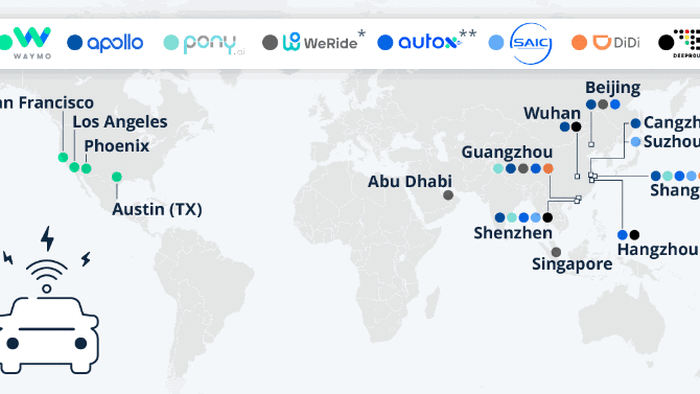Self-driving cars, often encapsulated in the term “robotaxis,” are currently navigating the complex landscape of technology and ethics. Despite the promise they hold, real-world applications remain somewhat limited, with operations primarily concentrated in urban environments. Public hesitance has been amplified by recent incidents, such as a Cruise robotaxi accident in San Francisco, leading to a re-evaluation of their safety and efficacy. As a result, Cruise, owned by General Motors, has temporarily suspended operations in six U.S. cities following this October mishap, reflecting the apprehension lawmakers and the public harbor regarding the safety of autonomous vehicles. In contrast, Waymo, a competitor backed by Alphabet, continues to maintain limited operations of driverless taxis in select American cities, including San Francisco, Los Angeles, Phoenix, and Austin, Texas.
While the United States grapples with regulatory and safety concerns, the deployment of robotaxis has gained a more established footing in several Chinese cities. Companies like Apollo Go, developed by Baidu, have made significant strides in expanding their fleet, currently operating around 400 robotaxis on the roads of Wuhan. The competitive nature of the market in China is evident, with numerous operators racing to dominate this burgeoning sector. Trials and services are underway not just in major cities like Guangzhou, Shenzhen, Shanghai, and Beijing, but also in smaller towns, where some companies initiated their first services. This progressive approach contrasts sharply with the cautious stance seen in the U.S.
China’s robotaxi market is notable for its aggressive expansion strategies, as operators often launch initial trials at no cost, using an application-based system to attract riders. However, the introduction of low fare structures has caused friction with traditional taxi drivers, who feel threatened by the clear market encroachment posed by autonomous vehicles. Unlike the U.S., where robotaxi operations face public scrutiny following accidents, China’s swift embrace of self-driving technology suggests a more optimistic outlook on the sector’s viability. Moreover, international expansion efforts are evident, as companies like WeRide have begun testing their services outside of China, including a public trial in Abu Dhabi, while Singapore has implemented a robobus service through the same company.
Despite progress in technological advancements, many current robotaxi services are restricted to defined geographical areas, operate only during specific times, and may have limitations on the distance covered. In China, regulations allow safety operators to oversee multiple vehicles—up to three at a time—from a remote location. Some operations also incorporate onboard safety drivers, although these drivers are not required to actively engage in vehicle operations. Such measures foster a sense of security but underscore the lingering concern about full autonomy in these vehicles. These safety protocols are essential, especially as public hesitation around safety continues to challenge the broader acceptance of autonomous vehicles.
The complexities surrounding robotaxi operations extend beyond mere technological capabilities. The intersection of innovation and ethics presents a challenging frontier for policymakers and industry leaders alike. Increasingly, discussions focus on the regulatory framework needed to ensure safety, liability, and ethical considerations are adequately addressed. The mixed reaction from the public, driven by a combination of anticipated benefits—such as reduced traffic congestion and improved accessibility—against fears related to job loss, safety incidents, and the reliability of autonomous systems, complicates the pursuit of widescale implementation.
As the robotaxi industry evolves, the balancing act between public safety and technological advancement will remain critical. Both U.S. and Chinese markets will likely shape the trajectory of self-driving technology, guided by ongoing trials, regulatory changes, and public sentiment. The ability of companies to navigate these multifaceted challenges will determine how swiftly and effectively the self-driving revolution materializes. Ultimately, robotaxis hold the potential to transform urban transportation, but this will require addressing the myriad issues that arise as society grapples with the consequences of automated travel.

